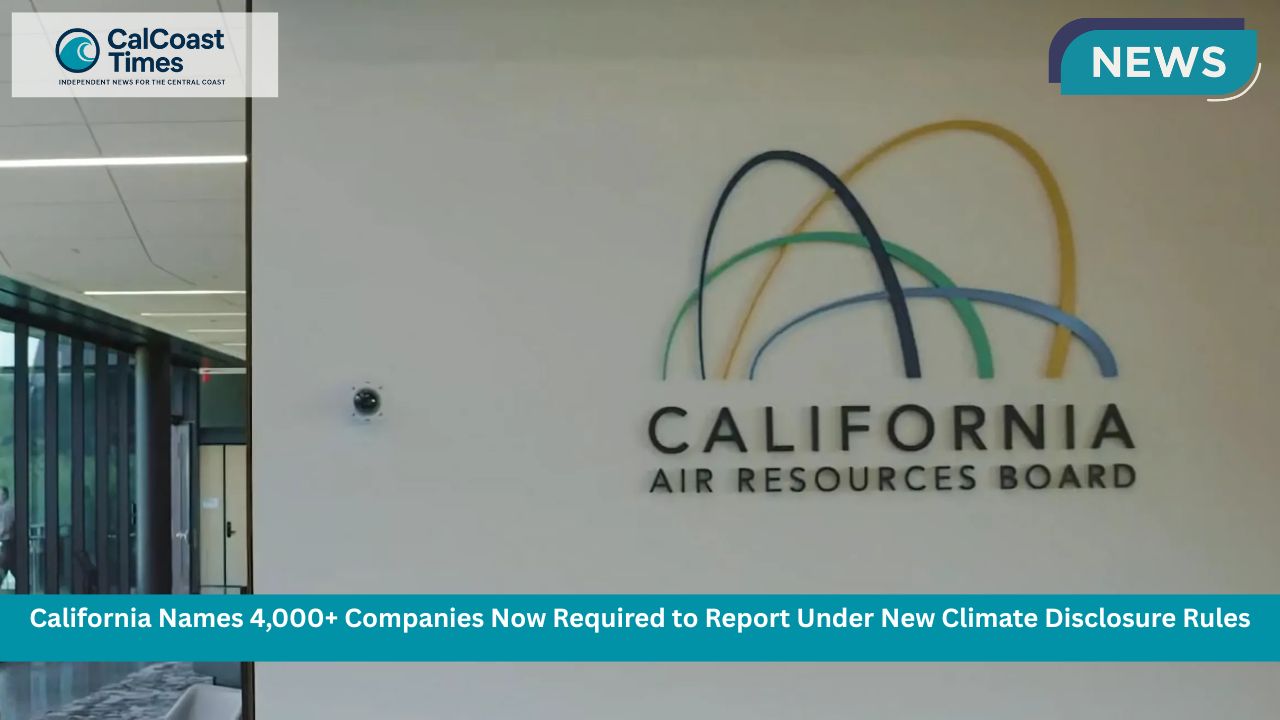California is once again at the forefront of environmental policy, recently unveiling a sweeping new set of climate disclosure rules that impacting more than 4,000 companies doing business in the state.
These regulations represent a major step towards greater corporate accountability on climate change, requiring extensive reporting on greenhouse gas emissions and climate-related financial risks. The move is expected to reshape how businesses plan, disclose, and ultimately reduce their environmental footprints.
This article explores the specifics of these new climate disclosure rules, identifies which companies are affected, delves into the implications for businesses and investors, and considers the broader impact on climate policy enforcement in California and beyond.
The Rise of Climate Disclosure Requirements
Climate-related disclosures have emerged globally as tools to mobilize corporate transparency and action. By mandating regular reporting of emissions data and climate risks, regulators hope to illuminate hidden liabilities, promote sustainable investment, and steer companies toward decarbonization. California’s latest rules join a wave of initiatives modeled on frameworks like the Task Force on Climate-Related Financial Disclosures (TCFD).
Overview of California’s New Climate Disclosure Rules
The California Air Resources Board (CARB) released the new regulations in early 2025, leveraging the state’s broad environmental mandate under laws like AB 32 and the Global Warming Solutions Act. Key elements include:
Scope: Applies to publicly traded companies, private companies with significant California operations, and some large nonprofit entities.
Reporting Mandate: Requires annual disclosure of Scope 1 (direct), Scope 2 (purchased electricity), and in many cases Scope 3 (indirect) greenhouse gas emissions.
Climate Risk Analysis: Companies must assess and disclose potential physical, transition, and regulatory risks stemming from climate change.
Third-Party Verification: Data submitted will undergo independent audit and verification to ensure accuracy.
Timeline: Full compliance begins in 2026 for fiscal year 2025 data.
Which Companies Are Included?
CARB estimates that over 4,000 companies fall under this new reporting obligation, spanning diverse sectors:
Energy producers and utilities
Manufacturing giants
Transportation and logistics firms
Technology companies with large physical footprints
Financial institutions with sizable California market presence
Major retailers and consumer goods producers
Smaller firms and those without relevant operations remain exempt, yet the scope is far broader than prior state rules, reflecting California’s ambition to become a climate regulation pioneer.
Reporting Requirements: Detailed Expectations
Companies must prepare comprehensive disclosures, including:
Annual greenhouse gas emissions inventories segmented by operational sources
Strategies and targets for emissions reductions aligned with California’s carbon neutrality goals
Financial analysis of climate change risks, such as supply chain disruptions and regulatory changes
Adaptation measures addressing physical effects like heat, drought, and sea level rise
These reports will form public records, accessible to investors, regulators, and consumers seeking climate-aligned businesses.
Early Compliance Assistance and Resources
Recognizing the challenge for many companies, CARB and partner agencies have launched support efforts:
Webinars and workshops on emissions accounting and climate risk measurement
Guides and toolkits tailored to small and mid-size enterprises
Grants and incentives to aid data collection and mitigation investments
A dedicated helpdesk for queries and compliance troubleshooting
This infrastructure seeks to ensure that climate disclosure is feasible, not prohibitive.
Impact on Business Operations
The new rules will likely drive significant operational shifts:
Enhanced sustainability governance and reporting systems
Stricter supplier and partner environmental requirements
Increased investment in carbon reduction technologies
Strategic reconsideration of construction, manufacturing, and logistics footprints
Potential shifts in product lines responding to consumer climate expectations
Early movers may gain competitive edge in green capital markets and brand loyalty.
Investor Influence and Market Dynamics
Investor groups represent a powerful force behind climate disclosure: transparency is critical for risk assessment and portfolio alignment. With California’s regulations, companies listed on U.S. exchanges and trading globally will face increasing pressure to conform—or risk downgraded credit ratings and investment withdrawals.
Environmental, Social, and Governance (ESG) metrics, now mainstream globally, will integrate these mandatory disclosures, making sustainability performance a financial imperative.
Comparison Table: California vs Other Climate Disclosure Rules
FeatureCalifornia New RulesSEC Proposed Rules (USA)EU CSRD (European Union)TCFD (Global Framework)Scope4,000+ companies in CALarge US registrantsAll large EU companiesVoluntary, global standardEmission Scopes Covered1, 2, & segmental 3Scopes 1, 2, & 3Broad scope, including 31, 2, & sometimes 3Risk DisclosuresPhysical & TransitionExtensiveExtensiveCore focusVerificationThird-party requiredExpectedRequiredRecommendedEffective Date2026 (for 2025 data)2023-2024 phased2024-2028 staggeredVarious
Community and Stakeholder Reactions
Environmental groups have welcomed the regulations as a groundbreaking step in corporate climate responsibility. Business associations have expressed cautious optimism but stress the need for clarity and reasonable timelines.
Consumers increasingly demand sustainable transparency, with surveys suggesting over 70% favor companies disclosing environmental impact comprehensively.
Challenges and Potential Pitfalls
Companies face hurdles such as:
Gathering accurate and verifiable emissions data, especially for Scope 3 goods and services.
Balancing disclosure with proprietary business concerns.
Managing increased compliance costs amid economic uncertainties.
Adapting internal policies while maintaining overall profitability.
Regulators continue to engage with stakeholders to refine guidance and smooth implementation.
The Long-Term View: A Climate Disclosure Ecosystem
California’s move signals a growing ecosystem of mandatory environmental reporting across the U.S. and globally. Increased harmonization, pressure from international bodies, and evolving technology will streamline disclosure and enforcement.
Investing in upfront systems today will develop resilience and transparency tomorrow.
Final Thoughts
As the curtain rises on California’s new climate disclosure era, businesses and consumers alike stand to benefit from enhanced transparency and engagement. For companies, proactive adaptation to the $425 million reporting mandate is not just a compliance issue—it’s a chance to lead in sustaining the planet’s future.
For customers and citizens, these disclosures bring clarity about who truly values the climate. The landscape of business responsibility is shifting under our feet—ever toward a greener, informed world. Those ready to embrace change will thrive; others risk falling behind. The countdown to October 2025 is underway—prepare now to participate in this pivotal transformation.
